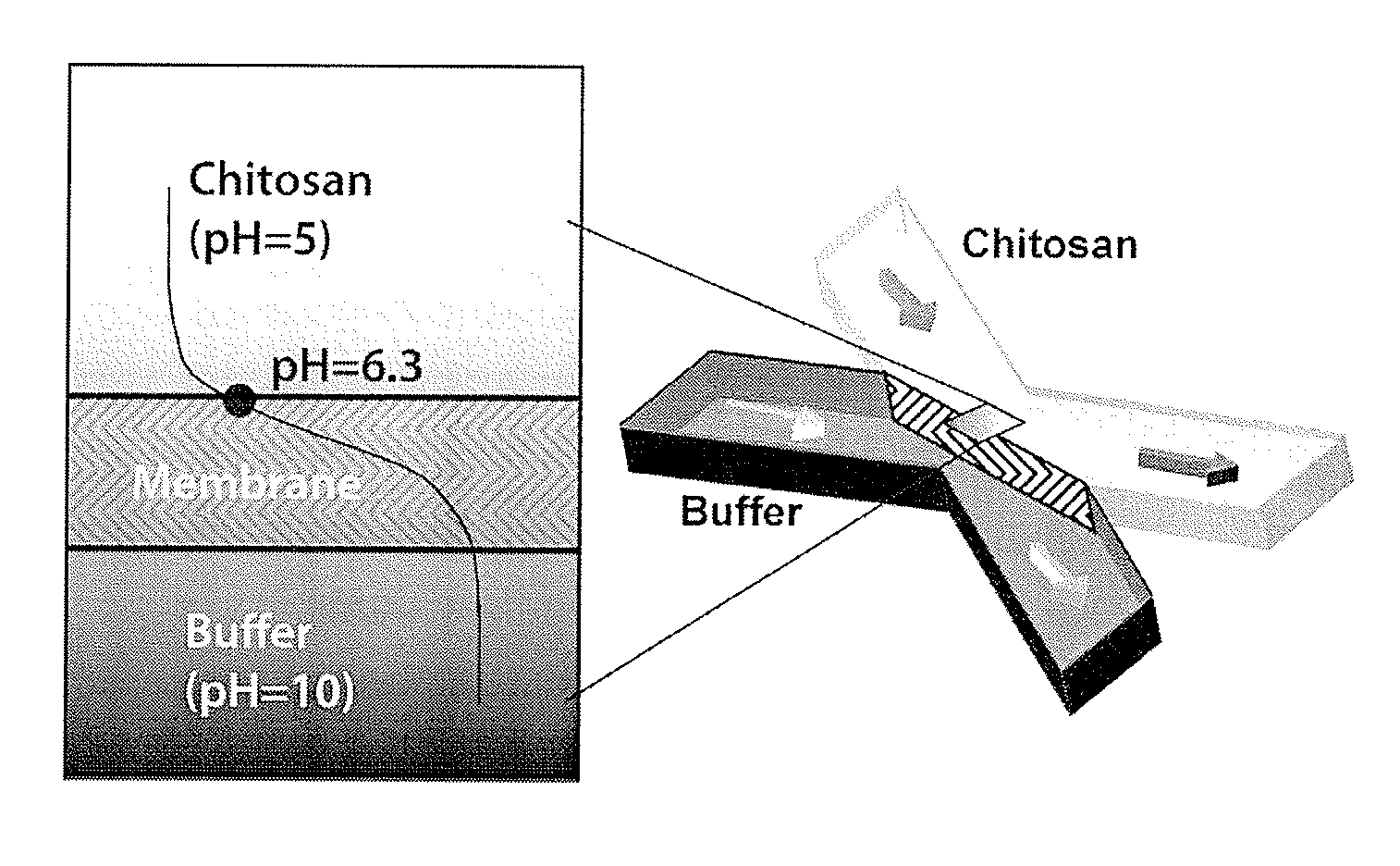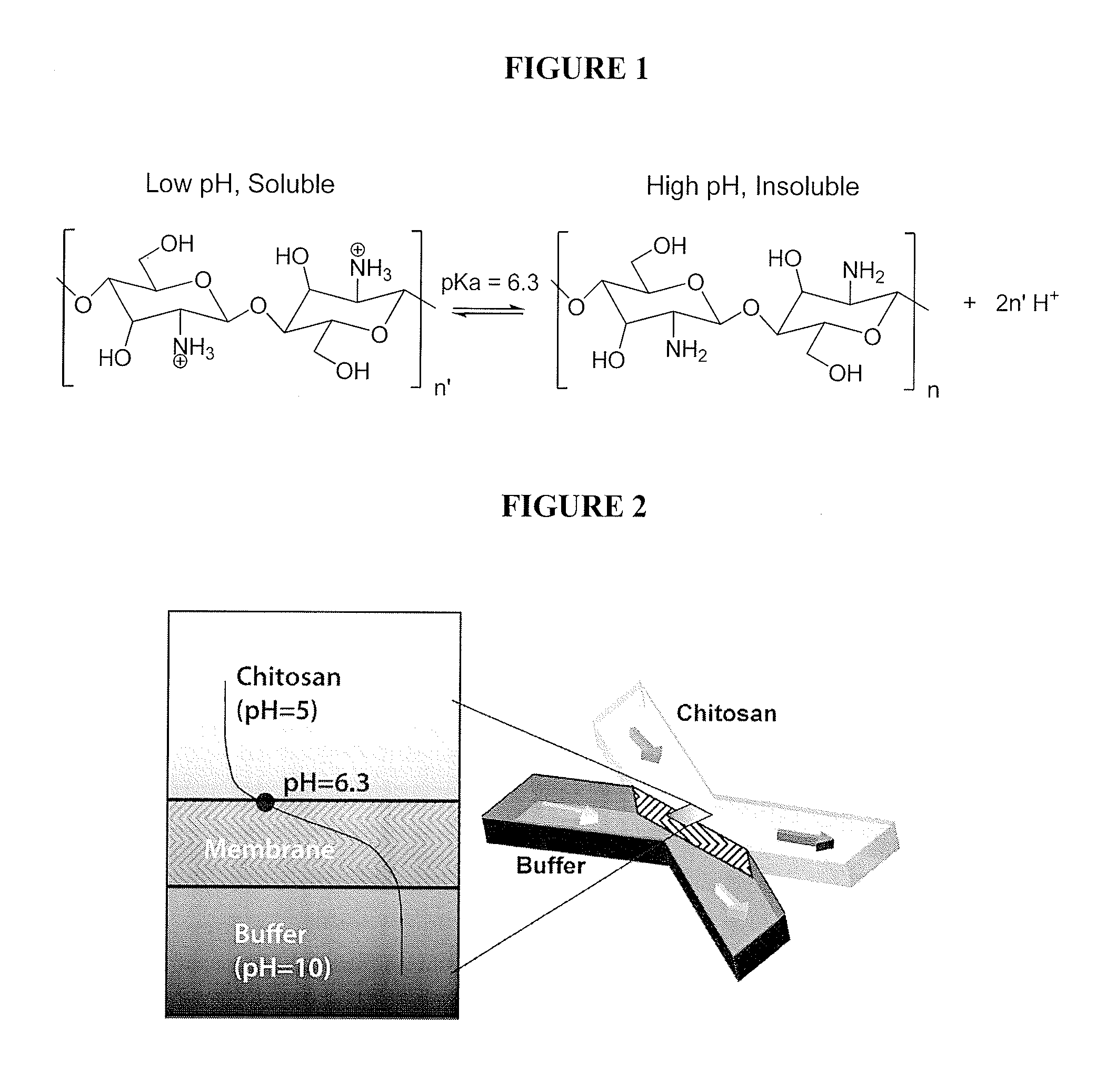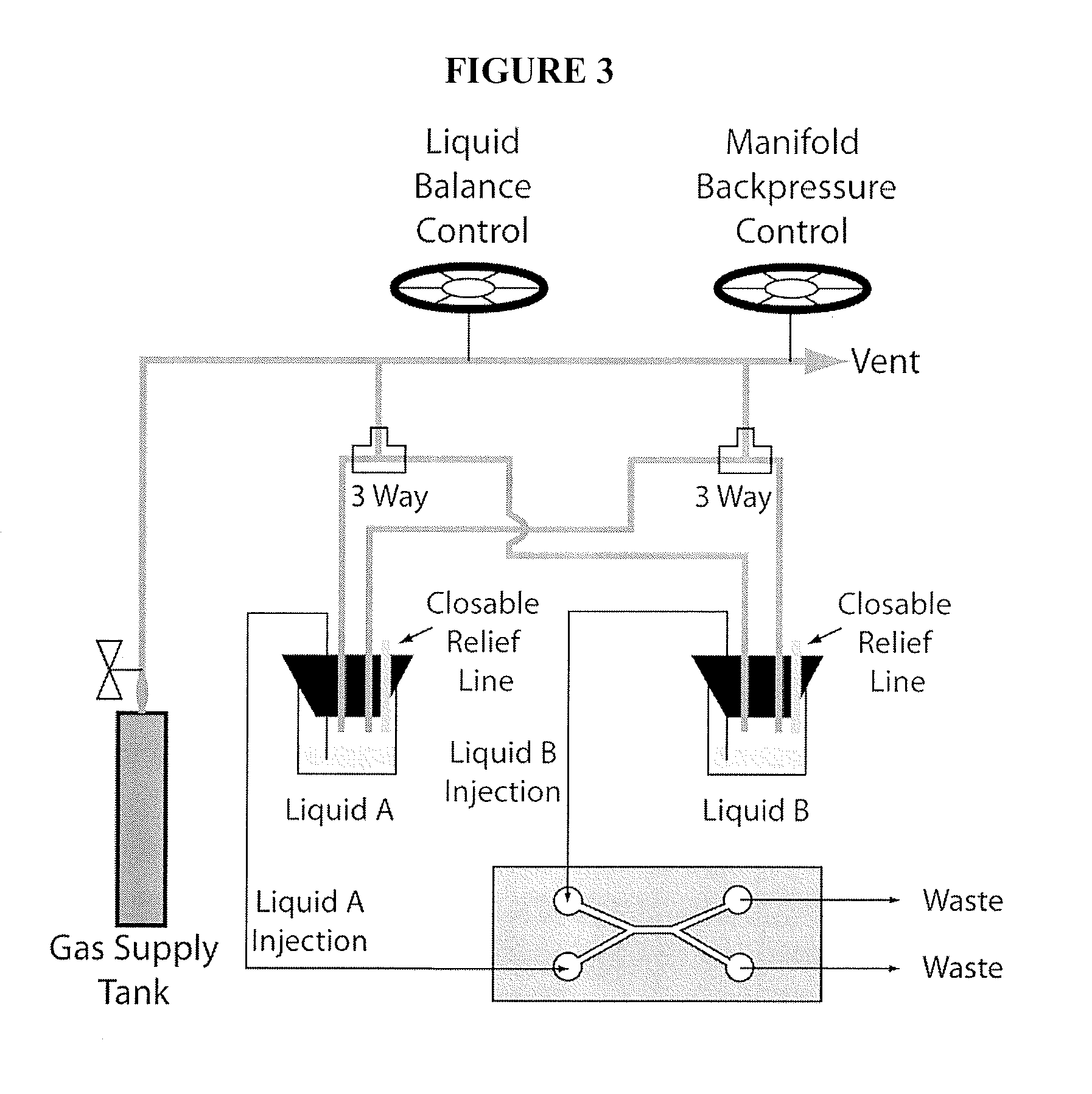Active Microfluidic Membranes
a microfluidic membrane and active technology, applied in the field of biofabricated active microfluidic membranes, can solve the problems of limited enzymatic conversion efficiency of such devices, difficult to efficiently immobilize catalytically active enzymes in microfluidic networks, and limited conversion efficiency in conventional techniques, so as to achieve controllable thickness and permeability
- Summary
- Abstract
- Description
- Claims
- Application Information
AI Technical Summary
Benefits of technology
Problems solved by technology
Method used
Image
Examples
example 1
Biofabrication of an Active Microfluidic Membrane (AMM) in a Microfluidic Device
Materials, Preparations and Tests
[0119]Chitosan (medium molecular weight, average molecular weight 300,000 g / mol), phosphate buffered saline tablets (10 mM phosphate buffer, 2.7 mM KCl and 137 mM NaCl, pH 7.4), fluorescein (for fluorescence, free acid, λex=490 nm / λem=514 nm in 0.1 M Tris pH 8.0) and universal pH indicator (pH 4-10) were purchased from Sigma-Aldrich Corporation, St. Louis, Mo. Sodium hydroxide and hydrochloric acid were purchased from Fisher Scientific, Pittsburgh, Pa. Polydimethylsiloxane (“PDMS”) kits (Sylgard 184 and curing agent) were purchased from Dow Corning, Greensboro, N.C. Microbore PTFE tubing (0.022″ ID / 0.042″ OD) was purchased from Cole-Parmer, Vernon Hills, Ill. Genie syringe pumps were purchased from Kent Scientific Corporation, Torrington, Conn. Micro glass slides and single-use syringes were purchased from VWR International, LLC, West Chester, Pa. 5-(and 6-)-Carboxyfluore...
example 2
Biofabrication of a Dual Membrane Active Microfluidic Membrane (AMM) in a Microfluidic Device
[0145]3D microenvironments are crucial for in vitro study of cell biology, especially for mammalian cells with limited tolerance to hydrodynamic forces of 2D cell culture systems. In 2D cell culture, cells are displaced as a monolayer on a flat substrate. In 3D cell culture, cells are supported in all directions either by neighboring cells or an extracellular matrix (ECM). Moving from 2D to 3D cell culture systems in microfluidics improves the biological relevance of analyses (Ong, S M et al. (2008) “A gel-free 3D microfluidic cell culture system,” Biomaterials 29(22):3237-3244). Various natural and synthetic hydrogels have been incorporated into microfluidic cell culture systems to support cells in 3D. However, in many cases ultraviolet photo-polymerization and thermo-initiative gelation are cytotoxic to cells (Sundararaghavan, H G et al. (2009) “Neurite growth in 3D collagen gels with grad...
example 3
Viability and Signaling Response of Cells Incorporated into a Dual Membrane Active Microfluidic Membrane (AMM) of a Microfluidic Device
[0151]To demonstrate that cells incorporated into an AMM retained viability, red E. coli cells were evaluated in vitro for their ability to fluoresce in response to Autoinducer-2 (AI-2). E. coli BL21 (DsRed) cells were assembled within an alginate scaffold membrane of an alginate-chitosan dual AMM (formed as described above). Luria Both (LB) supplemented with 60 μM AI-2 (signal molecule to stimulate RFP production) and 10 mM CaCl2 (to maintain alginate gel stability) was introduced into the microchannel at a flow rate of 5 μL / min (in contrast to the 0.2 μL / min flow rate employed for in vivo experiments). FIG. 32A shows that cell density was very high inside the alginate gel after culturing for 5 hours, indicating that the cells remained viable and proliferated dramatically within the alginate scaffold membrane of the dual AMM. As shown in FIG. 32B, t...
PUM
| Property | Measurement | Unit |
|---|---|---|
| Size | aaaaa | aaaaa |
| Solubility (mass) | aaaaa | aaaaa |
| Permeability | aaaaa | aaaaa |
Abstract
Description
Claims
Application Information
 Login to View More
Login to View More - R&D
- Intellectual Property
- Life Sciences
- Materials
- Tech Scout
- Unparalleled Data Quality
- Higher Quality Content
- 60% Fewer Hallucinations
Browse by: Latest US Patents, China's latest patents, Technical Efficacy Thesaurus, Application Domain, Technology Topic, Popular Technical Reports.
© 2025 PatSnap. All rights reserved.Legal|Privacy policy|Modern Slavery Act Transparency Statement|Sitemap|About US| Contact US: help@patsnap.com



